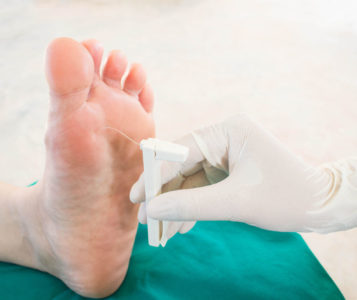 If you’re dealing with pain under your arch, there’s a chance that you’re dealing with plantar faciitis. However, there’s also the possibility that you’re dealing with a different condition known as plantar fibroma that impacts the same area. Today, we explain what plantar fibroma is, and how it is treated.
If you’re dealing with pain under your arch, there’s a chance that you’re dealing with plantar faciitis. However, there’s also the possibility that you’re dealing with a different condition known as plantar fibroma that impacts the same area. Today, we explain what plantar fibroma is, and how it is treated.
What is Plantar Fibroma?
Plantar fibroma is categorized by the growth of a benign nodule that forms between the skin and the layers of muscle on the underside of your feet. They typically appear in midlife, and they don’t usually get more than an inch in size. When a number of them begin to grow, this is known as plantar fibromatosis, and they can affect your nerves and ligaments. Even though the are non-cancerous, they can still cause problems if they compress vital structures.
Symptoms of plantar fibroma include:
- Pain on the bottom of your foot, usually in the arch area.
- Increased pain when walking or when pressure is applied.
- A visual bump or convexity in the middle of the normally contoured arch.
Not much is known about these growths, as researchers do not know what causes them to develop. They do not believe that acute trauma is a factor, but they suspect genetics might play a role.
Plantar Fibroma Diagnosis and Treatment
If you are dealing with pain under your arch, or your doctor can see a visible bump on the underside of your foot, they will conduct some imaging tests. An X-ray or MRI can help identify the soft tissue masses in the foot, and they can rule out some types of cancers.
Treating the condition is based on the individual and the present symptoms. If there is a visible bump but no symptoms, doctors may recommend observation and a return to the clinic if symptoms begin. Your doctor may also recommend orthotic inserts to help take pressure off the arch area.
For painful fibromas, a minimally invasive operation is usually the easiest option. Most patients report good levels of pain relief and the recurrence rate for fibromas is very low. If you are dealing with plantar fibromatosis, surgery is still a good option, although the nodule return likelihood is higher. You may need to be non-weight bearing or limited weight bearing for a little bit after the operation, and return to unrestricted activity and shoewear takes about a month or two.